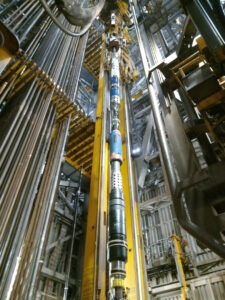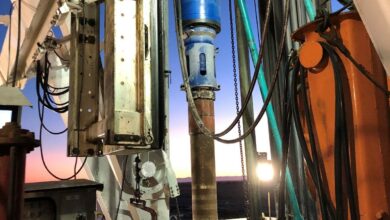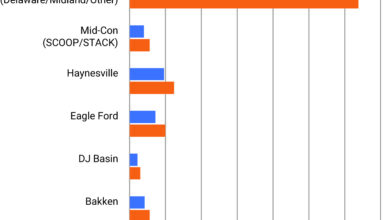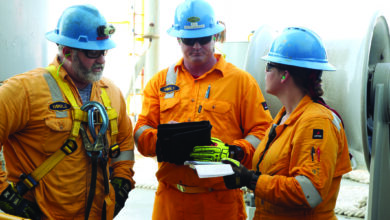Drilling & Completion Tech Digest
Remotely Operated Controls System eliminates umbilical in Aker BP well completions

Norway-based Optime recently deployed its subsea system, the Remotely Operated Controls System (ROCS), to eliminate the umbilical during well completions on the Ærfugl field for Aker BP. This is a first for this type of operation in the industry, according to Optime.
The deployment occurred in late February during completions operations for a production well on the Ærfugl field on the Norwegian Continental Shelf.
ROCS is a remotely controlled topside, using an advanced controls unit and without a large hydraulic system, thus eliminating a costly and heavy umbilical. When completing subsea wells, the tubing hanger is placed on top of the wellhead as a seal toward the rest of the subsea well. Typically this is controlled through a dedicated hydraulic umbilical, which includes a 20-30 ft control container. When running the umbilical, it is clamped to the tubing for increased stability. ROCS replaces the operation by remotely controlling a controls unit toward the wellhead.
Optime believes the system has significant potential to help operators improve efficiency while reducing HSE risks and costs.
“Through the use of ROCS, we have been able to move tonnes of actual equipment from the rig, as well as mechanical and hydraulic interfaces, into a simple and efficient software,” said Mads Rødsjø, Head of Aker BP’s Subsea Well Operations. “This is truly digitalization.”
Optime signed a frame agreement with Aker BP in January 2019 that includes work on the operator’s subsea systems for two years, with a two-year extension.
Expandable liner enables deeper kick-off in Norway well

Coretrax recently announced the first deployment of its expandable liner technology in Norway since its acquisition of expandable tubular well specialist Mohawk Energy.
The RelineDL is a hydraulic expansion system that enables operators to isolate low-pressure or thief zones, which can be encountered while drilling. This provides a significant inner diameter advantage compared with a conventional liner string, enabling the safe and effective passage of larger completion strings and maximizing production.
Planned and supported from Aberdeen, the expandable drilling liner was mobilized when a major Norwegian operator needed to isolate the gas cap in a lateral well during a drilling campaign.
Compared with conventional methods, the tool enabled the operator to kick-off much deeper in the well, eliminating the need to drill a section of the wellbore and install a tieback. The system was fully expanded within six hours, and the entire project was completed in less than 40 hours. This saved 14 days of rig time, according to Coretrax.
Shell, Baker Hughes help to launch ai energy initiative
Shell, C3 AI, Baker Hughes and Microsoft launched the Open AI Energy Initiative (OAI), an open ecosystem of artificial intelligence-based solutions for the energy and process industries. The OAI provides a framework for energy operators, service providers, equipment providers and independent software vendors for energy services to offer interoperable solutions, including AI and physics-based models, powered by the BHC3 AI Suite and Microsoft Azure.
The first set of OAI solutions provided by Shell and Baker Hughes are focused on reliability and designed to improve uptime and performance of energy assets and processes.
Transocean deploys wearable drill floor safety technology
Transocean has deployed the HaloGuard safety system. It combines a wearable alarm and a real-time location transmitter together with a machine vision system that tracks the position of personnel on the drill floor and key drill floor equipment while operating.
When a crew members comes within a certain proximity of moving equipment, the wearable device will sound an alarm. If the crew member remains in close proximity of the moving equipment, the system will stop the equipment from moving until the crew member returns to a safer position.
The system is operational on the Deepwater Conqueror, and Transocean plans to deploy the technology on six additional rigs by the end of 2021.
BP to explore quantum computing for energy
BP has joined the IBM Quantum Network, gaining access to a 65-qubit quantum computer – the largest universal quantum system available to industry today.
BP aims to use quantum computing to solve business and engineering challenges and explore potential applications for driving efficiencies and reducing carbon emissions.




